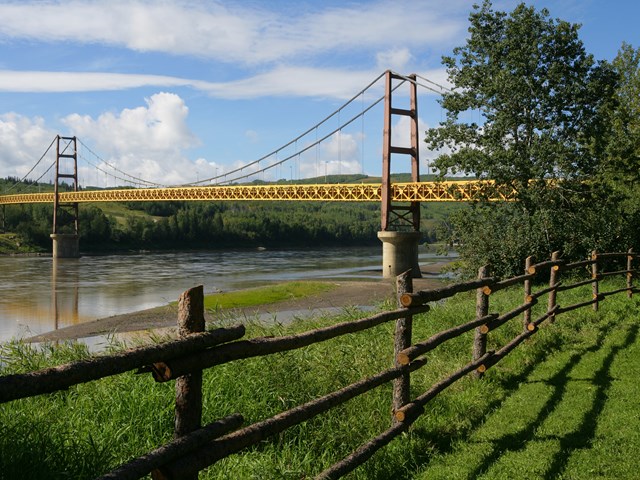Wembley, Alberta, Canada
Wembley, a Canadian town, is located in northern Alberta. It lies approximately 23km (14 mi) west Grande Prairie, at Highway 43 & Highway 724.
Statistics Canada’s 2016 Census showed that 1,516 people lived in 565 of 618 private dwellings. This is 9.6% more than the 1,383 population of 2011. It has a 4.75km2 (1.83 sq mi) land area and a population density 319.2/km2 (826.6/sq mi).
According to the 2012 municipal census, 1,410 people lived in Wembley.
The 2011 Census showed that the Town of Wembley was home to 1,383 people, living in 514 out of 542 dwellings. This is a 4.2% decrease from the 1,443 residents in 2006. It had a 4.54km2 (1.75 mi) land area and a population density of 304.6/km2 (789.0/sq mile) in 2011.
History
Settlements began in 1910. In 1909, the land around Wembley was surveyed to make homesteads. Grande Prairie to Pouce Coupe was covered by the railroad survey in 1916. The townsite of Wembley was then surveyed in 1923. The railroad was built in 1924.
The current townsite is located four and a quarter miles south of Lake Saskatoon. Many buildings were moved over the four-and-one-half miles of snow-covered trails that ran from Lake Saskatoon to their new foundations at Wembley. At the British Empire Exposition in Wembley, England, the Lake Saskatoon Board of Trade chose Wembley.
The first post office was opened in November 1924. RB Sinclair was the first postmaster to open it. Wembley achieved village status on January 3, 1928, and town status on August 1, 1980.
Our Services in Wembley, Alberta, Canada
Places to Visit
 Wembley is a lace that has many interesting places to visit. Some of these are listed below:
Wembley is a lace that has many interesting places to visit. Some of these are listed below:
Wembley Museum & Art Gallery is located on Main Street in the old city hall building. It began in 1964 with Lady Chief Justice Oswald being instrumental in providing costumes for exhibits during the summer months.
Dawson Creek, Canada, is located in northeastern British Columbia. In 2011, the population of Dawson Creek, which covers 24.37 km2, was 11,583. Dawson Creek is named after the creek that runs through it. A member of George Mercer Dawson’s land survey team named the creek after him in August 1879, when they passed through the region. Dawson Creek was once a small farming community. It became a regional center in 1932 when the Northern Alberta Railways extended its western terminus there. As the U.S. Army constructed the Alaska Highway, the railroad terminus was used by the U.S. Army to transship cargo. This led to the rapid growth of the community. The city was connected to British Columbia’s interior via a railway and highway through the Rocky Mountains in the 1950s. Growth has slowed since the 1960s. Dawson Creek is found in the Peace River Country’s dry, windy prairie land.
Dunvegan Provincial Park, Historic Dunvegan, and Dunvegan Provincial Park are provincial parks and historic sites in Alberta. They can be found together at one location. They can be located in Dunvegan at the intersection of Peace River and Highway 2 between Rycroft and Fairview. This was the site of one of Alberta’s first fur trade posts and missionary centers. National Historic Site of Canada, the site of Fort Dunvegan built initially, is also located here. Archibald Norman McLeod made it in 1805 and named Dunvegan Castle his ancestral home. It includes a visitor center, four historic buildings, and interpreters who are available seasonally. There are 67 campsites with electric hookups, a designated use area, and a playground.
Northern Alberta Railways (reporting name NAR) was a Canadian railroad operated in northern Alberta and northeastern British Columbia. From 1929 to 1981, NAR was a separate company jointly owned by Canadian National Railway (CNR) and Canadian Pacific Railway (CPR).
Dawson Creek, Canada, is a municipality in northeastern British Columbia. In 2016, the city, which covers 24.37 km (9.41 mi), had 12,978 inhabitants. Dawson Creek is named after the creek that runs through it. A member of George Mercer Dawson’s land survey team named the creek after him in August 1879, when they passed through the region. Dawson Creek was once a small farming community. It became a regional hub in 1932 when the Northern Alberta Railways extended its western terminus there. As the U.S. Army constructed the Alaska Highway, the railroad terminus was used by the U.S. Army to transship cargo. This led to the rapid growth of the community. The city was connected to British Columbia’s interior via a highway and railway that ran through the Rocky Mountains in the 1950s. The area’s population has grown, although growth has slowed since the 1960s.
Highway 97, the longest continuously numbered road in British Columbia, is 2,081 km (1 293 mi). It runs from Osoyoos, Canada, to the British Columbia/Yukon border in the north at Watson Lake (Yukon). It takes its number from U.S. Route 97, with which it connects at an international border. In 1953, the highway was first designated “97”.
Wembley is a great place to escape the city hustle and bustle. It is a great place to relax and enjoy the town’s natural beauty. Because everything is so well maintained, it has been named one of Canada’s top places to live. There are beautiful views all around and friendly people willing to help you plan your next adventure.

